Måste-se platser i Portugal
Förbered dig på att cykla genom Portugals bästa! Här är en handplockad lista över de platser du måste se som förvandlar varje cykeldag till ett äventyr fyllt av wow.
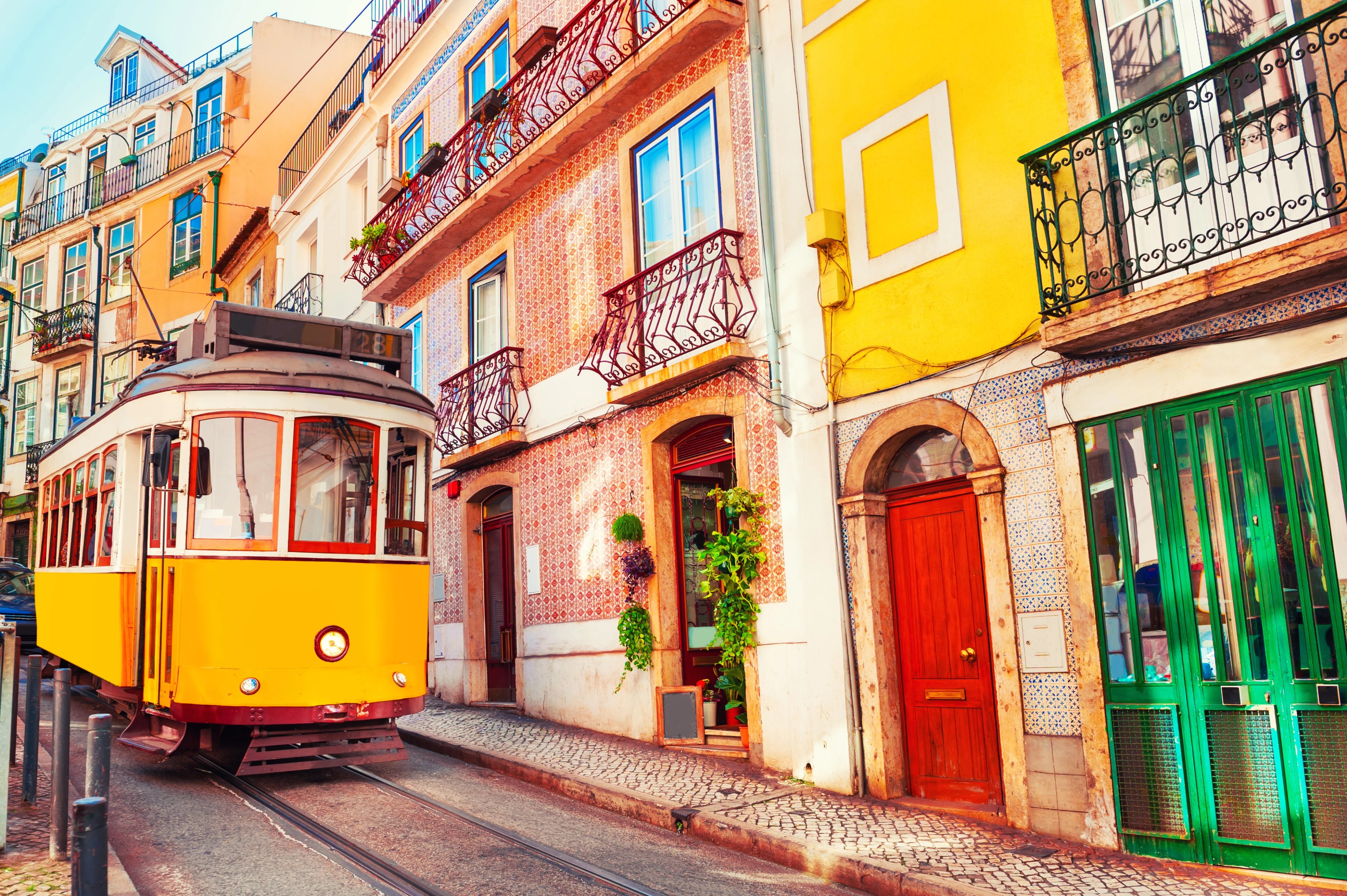
Letar du efter de bästa sakerna att se i Portugal?
Denna lista över platser du måste se i Portugal blandar naturlig skönhet, historiska städer och oförglömliga upplevelser i Portugal—perfekt för alla som söker unika saker att göra i Portugal på två hjul.

Från sagolika skogar och vulkaniska sjöar till vilda klippor och 17 UNESCO-juveler, dessa destinationer är inte bara vackra bilder—de är själen av Portugal, och cykling är det mest immersiva sättet att upptäcka dem.
Portugals TOPP-underverk efter region
1. Algarve
En solig tillflyktsort för cykelsemestrar i Portugal, Algarve erbjuder kustvägar, böljande inlandsvägar och solsken året runt.
Från dramatiska klippor och gyllene stränder till vitkalkade fiskebyar, är det en favorit för cyklister som söker enastående landskap och långa, oavbrutna turer.
Fånga dessa vyer under Algarve Cykelsemestrar!
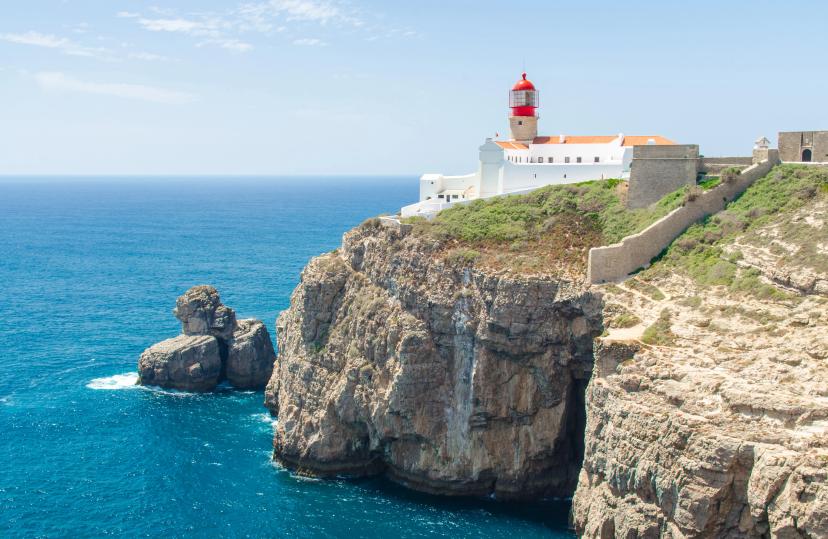
Cape St. Vicente

Ria Formosa Natural Park
A labyrinth of salt marshes, barrier islands, and tidal lagoons stretches 60km along the Algarve coast. Ria Formosa is one of Portugal’s most important wetland areas. It is home to elegant flamingos, flocks of spoonbills, and winding trails where sea and sky blur. It’s a peaceful detour where nature takes center stage, full of stillness, color, and surprise.
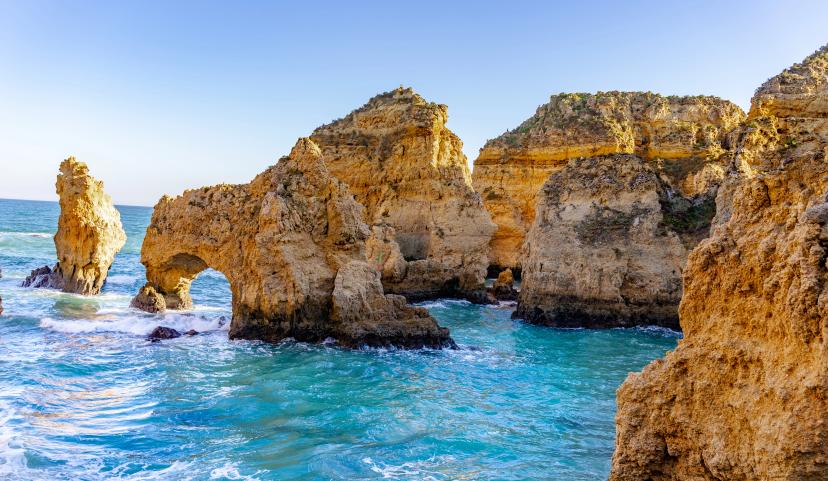
Ponta da Piedade
This headland near Lagos is one of the most photographed spots in the Algarve—and for good reason. The golden cliffs rise up to 20 meters above the ocean, carved by wind and waves into arches, stacks, and caves. You’ll ride right up to the edge, where a short walk takes you to panoramic views over the Atlantic. Boat trips and kayaking tours also leave from here.

Pego do Inferno waterfall
Hidden in the hills near Tavira, Pego do Inferno is one of the few natural waterfalls in the Algarve. It drops into a small emerald pool surrounded by trees—an ideal stop to rest, swim, or cool off. Local legend says the pool has no bottom, but in reality, it’s a calm, shallow spot often missed by tourists.
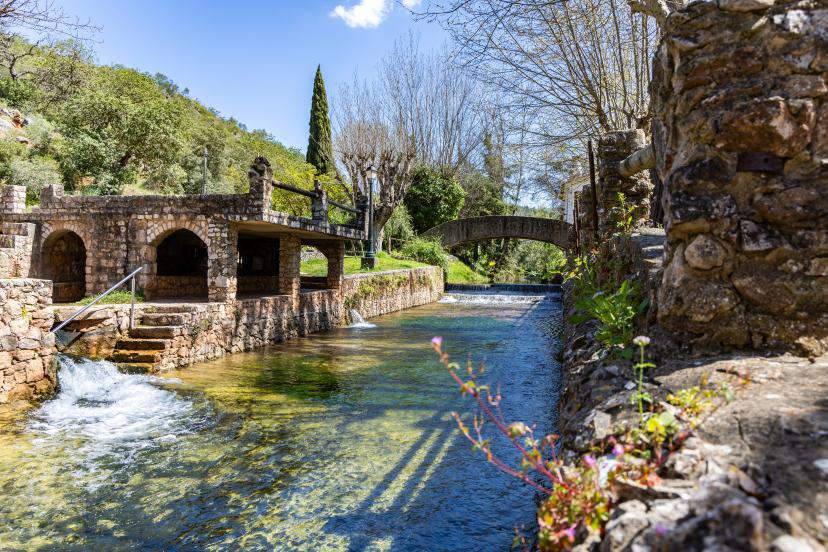
Alte
Alte is a small inland village known for its spring-fed pools, whitewashed houses, and traditional Algarve charm. It’s a great change of pace from the coast, with quiet streets, local cafés, and a river trail that follows the Fonte Pequena and Fonte Grande springs. You can even dip your feet in the clear water before pedaling on.
2. Douro-dalen
Cykla i Douro-dalen är en av de mest förtrollande cykelturerna som Portugal har att erbjuda—vingårdsbeklädda terrasser, glittrande flodutsikter och århundraden gamla quintas gör varje sväng perfekt för bilder.
Denna region är idealisk för cyklister som söker en lugnt, naturskönt äventyr där varje klunk portvin känns förtjänt.
Nu, låt oss rulla in i de måsten du inte får missa längs vägen:
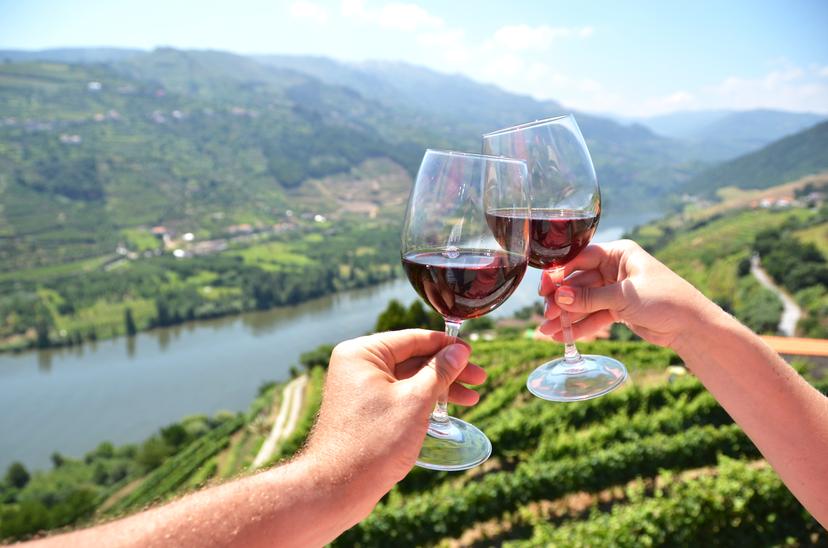
Douro Valley
This is Portugal’s oldest wine region and a UNESCO World Heritage Site. The Douro River winds through steep slopes covered in vineyards, where grapes have been grown and harvested for over 2,000 years. Riding here means constant views—vineyard terraces, stone villages, and river bends that seem made for postcards.
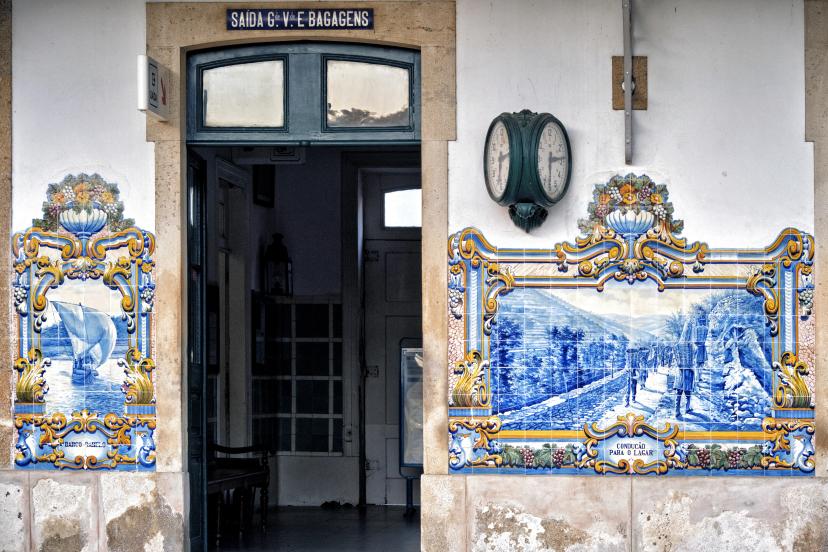
Pinhão Railway Station
This small station is a hidden gem. Its walls are covered in 24 hand-painted tile panels showing life in the Douro—grape harvests, rabelo boats, and terraced vineyards. Built in 1880 and decorated in 1937, it’s one of the most beautiful stops along the Douro line and a quick, memorable photo break on your ride.
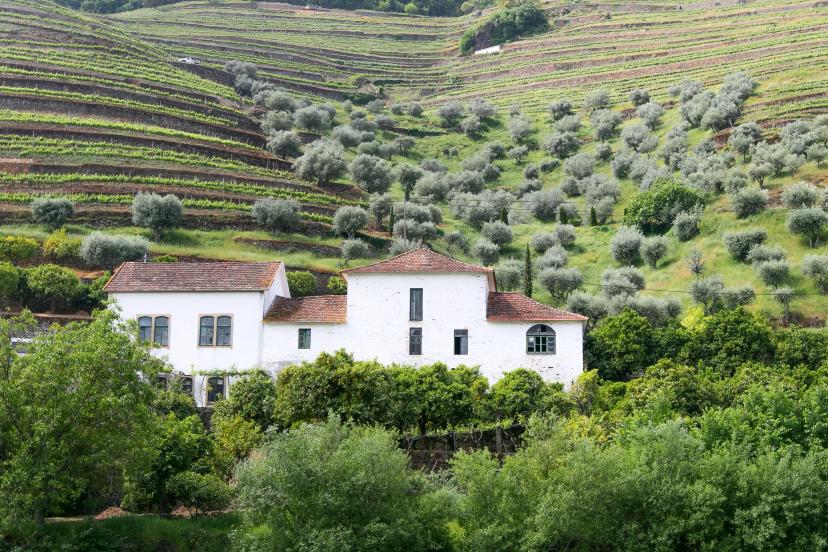
Traditional Quintas
The Douro is packed with quintas—family-run estates that grow grapes and produce wine on-site. Among others, you’ll stop at Quinta da Pacheca, one of the oldest and most respected in the region. Here you can walk the vineyards, taste the local wines, and learn how Port wine is made right where the grapes are grown.

Nossa Senhora dos Remédios
Built between the 18th and early 20th century, this sanctuary in Lamego sits high above the town and is famous for its grand staircase. It features 686 steps zig-zagging up the hillside, lined with fountains, statues, and traditional Portuguese tiles and is known as one of Portugal’s most iconic pilgrimage sites.

Douro Miraduros
The Douro is full of scenic overlooks known as miradouros. One of the best is Miradouro de Casal de Loivos, just above Pinhão. It’s a short but steep climb to get there, and the reward is huge—panoramic views over the river, the valley, and the endless vineyard terraces.
3. Madeira
En fantastisk ölekplats för cykelsemestrar i Portugal, Madeira cykeltur erbjuder en blandning av havsutsikter, vulkaniska toppar och frodiga subtropiska landskap.
Dess klättringar är legendariska, dess nedfarter är spännande, och varje rutt erbjuder ett vykortsögonblick.
Här är våra favoritställen som du kommer att se under turen:
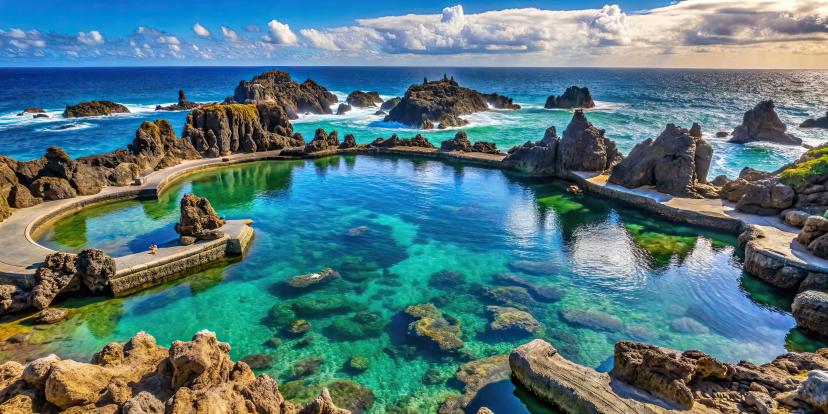
Porto Moniz naturliga pooler
Bildade naturligt bland vulkanisk svart lava längs nordvästkusten, är Porto Moniz-poolerna fyllda av tidvattnet och erbjuder säker, naturskön simning. Turkost tidvatten inom robusta klippformationer skapar en minnesvärd badupplevelse.

Santana
Santana är en kommun på Madeiras norra kust, känd för sina små triangulära halmtakshus kallade “palheiros” – färgglatt målade trä- och halmhytter som går tillbaka till 1500-talet. Dessa ikoniska bostäder, tillsammans med traditionellt broderihantverk, är symboler för Madeiras kulturarv.
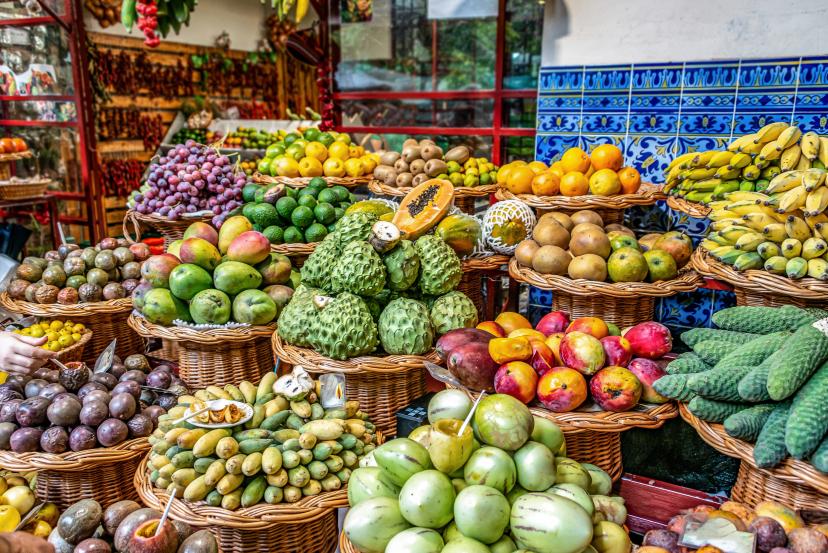
Bondens marknad Funchal
Denna livliga marknad, invigd 1940, är hjärtat i Funchals matscen. Det är en färgglad, energisk plats som säljer lokala produkter, tropiska frukter (tänk drakfrukt, bananer), färsk fisk och kött, samt dekorativa blommor och hantverk. Övervåningen har frukter och blommor, medan fisk- och köttavdelningen finns på nedervåningen.

Laurisilva-skog
Madeiras lager (laurisilva) skog är en UNESCO-världsarvslistad "molnskog" med uråldriga träd och unik biologisk mångfald. Den är hem för endemiska fågelarter som Madeiras eldkrypare och blåbofink och korsas av historiska levadastigar. Detta uråldriga ekosystem förblir en av Europas sista subtropiska skogar.
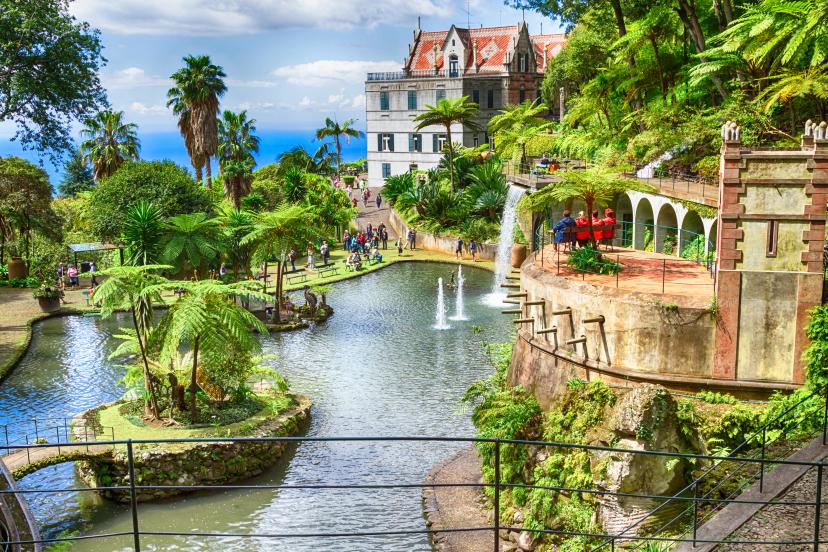
Madeira botaniska trädgård
Beläget på en tidigare egendom ovanför Funchal och öppnat 1960, sträcker sig Madeiras botaniska trädgård över cirka 8 hektar och har över 2 000 växtarter - från endemisk öflora till exotiska palmer, suckulenter, orkidéer och ormbunkar. Den fungerar både som en offentlig trädgård och som ett bevarande-/forskningscenter.
4. Vicentina-kusten
En vild och blåsigt sträcka av Portugals kust, Vicentina cykeltur kombinerar branta klippor, dolda vikar och den lugnande rytmen av Atlanten.
En del av Rota Vicentina, denna region erbjuder lugna bakvägar, dramatiska kustutsikter och charmiga fiskebyar.
Redo att utforska? Bilderna kommer aldrig att göra dessa platser rättvisa:

Ponta da Piedade
Denna udde nära Lagos är en av de mest fotograferade platserna i Algarve—och med goda skäl. De gyllene klipporna reser sig upp till 20 meter över havet, formade av vind och vågor till valv, stenar och grottor. Du kommer att åka ända fram till kanten, där en kort promenad tar dig till panoramautsikter över Atlanten. Båtutflykter och kajakpaddlingsturer avgår också härifrån.

Moinho de Odeceixe
Denna traditionella vindmölla, som dateras tillbaka till 1898, ligger högt ovanför byn Odeceixe. En gång använd för att mala spannmål för lokala bönder, är den nu fullt restaurerad och öppen för besök. Utsikten är fantastisk - över dalen, ner till den böljande stranden och ut mot Atlanten.

Santiago do Cacém-slottet
Denna bergstoppsfästning har bevakat Alentejo i århundraden. Ursprungligen en morisk fästning, togs den av Portugals första kung på 1100-talet. De tjocka stenväggarna, tio fyrkantiga torn och den fridfulla kyrkan byggd av Santiago-riddarna berättar historier om strider och tro. Promenera längs murarna och njut av de vidsträckta vyerna över den röd-takade staden och de böljande kullarna nedanför – det är en kraftfull påminnelse om Portugals mångfacetterade förflutna.
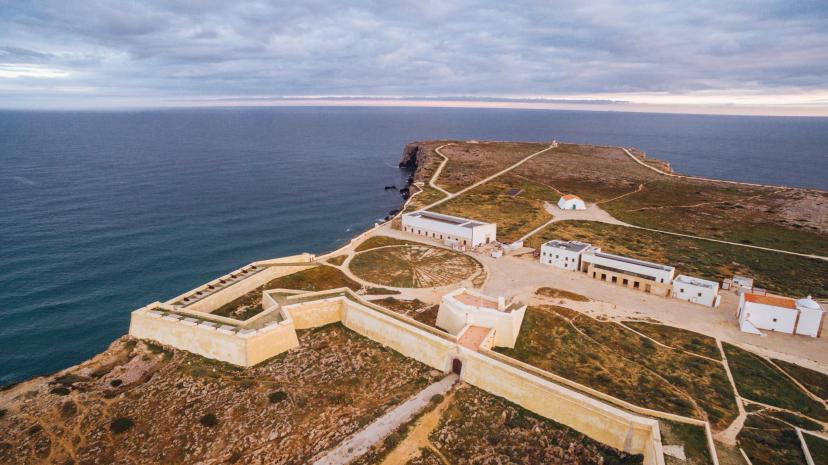
Sagres fästning
Byggd på 1400-talet under prins Henrik Sjöfararen, var Sagres fästning en startpunkt för Portugals stora upptäcktsresor. Belägen på en blåsigt udde, är den del fästning, del klipputsikt. Inuti hittar du en gigantisk stenkorsvind, resterna av en gammal kyrka och massor av salt havsluft. Det är en plats som formade historien—och som fortfarande känns episk.
5. Silver Coast
Storslagna havsutsikter, långa sandstränder och historiska städer gör vår Silver Coast-tur till en dröm för cyklister.
Från medeltida stadsmurar till surfsköljda stränder, förenar denna region kultur och kust på ett sätt som gör varje dag i sadeln spännande. Här är vad du kan se fram emot längs vägen:

Porto’s Ribeira District
The Ribeira district is Porto’s historic riverside quarter and a UNESCO World Heritage Site. It’s known for its tightly packed colorful buildings, medieval alleyways, and proximity to the Dom Luís I Bridge. The area has been a hub of trade and daily life since Roman times and is home to traditional restaurants, wine cellars, and city landmarks along the Douro River.
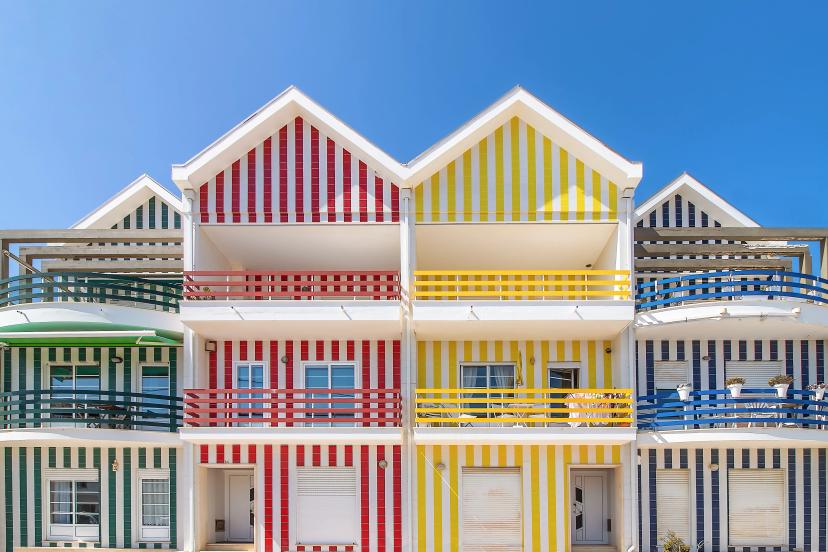
Costa Nova striped houses
Costa Nova is a small coastal village known for its iconic “palheiros”—wooden houses painted in bright vertical stripes. Originally used by fishermen in the 19th century to store gear, they have become a national symbol of Portugal’s seaside culture. The houses line the main avenue and create one of the most recognizable visuals along the Silver Coast.

Aveiro - Venice of Portugal
Aveiro is known for its network of canals that cross the city center. These canals were traditionally used by moliceiros—flat, decorated boats that transported seaweed and goods. Today, the city is nicknamed the “Venice of Portugal” and features tiled Art Nouveau buildings, pedestrian bridges, and a mix of historic and modern architecture surrounding the water channels.
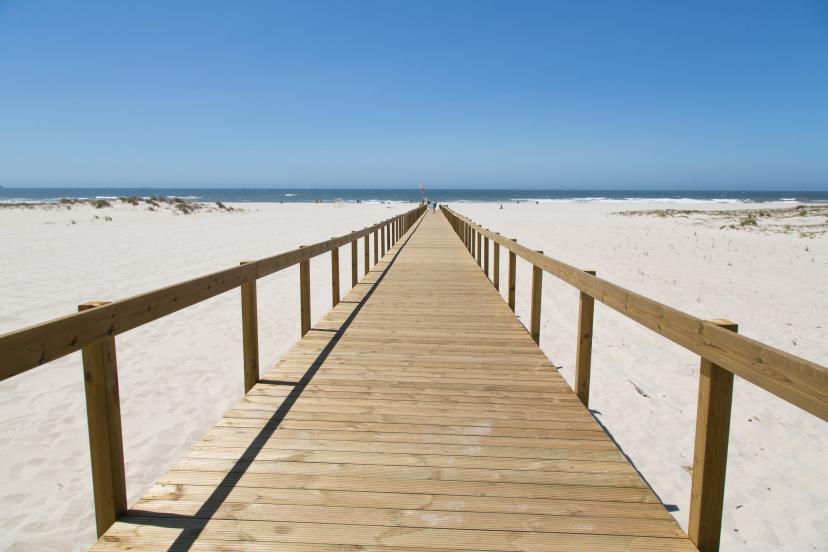
São Jacinto Dunes Natural Reserve
This protected nature reserve includes 960 hectares of sand dunes, pine forests, wetlands, and coastal habitat at the end of the São Jacinto Peninsula. The area features wooden boardwalks through the dunes and trails for nature observation. It’s an important habitat for migratory birds, including flamingos, herons, and spoonbills, and part of the Natura 2000 ecological network.
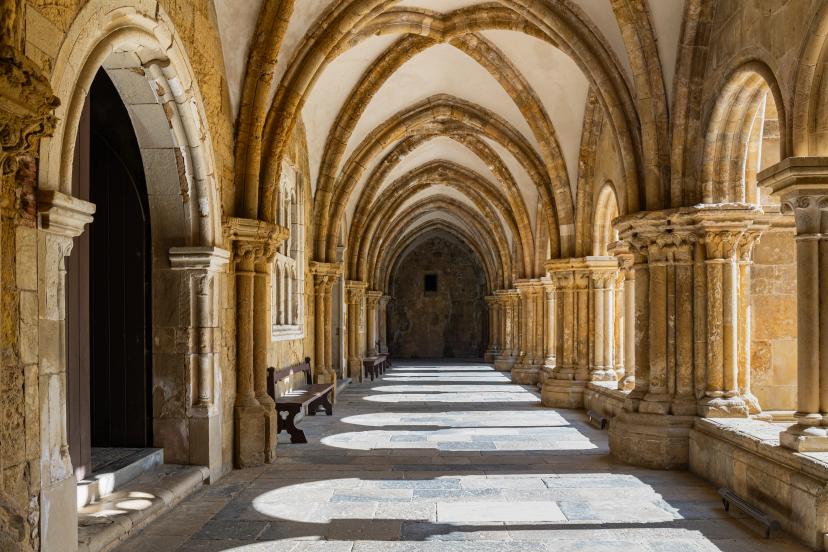
The Old Cathedral of Coimbra
The Old Cathedral of Coimbra was built in the 12th century, shortly after the founding of Portugal. It is one of the few Romanesque cathedrals in the country to survive mostly intact. Its fortress-like exterior, narrow windows, and battlements reflect its defensive role during the Christian Reconquest. Inside, it houses Gothic chapels, medieval tombs, and a detailed stone altar.
Vart går vi härnäst?
Vi är här för att hjälpa dig att välja rätt rutt. Tveka inte att skicka oss ett meddelande så hjälper vi dig att se till att du inte missar några av de viktiga platserna längs vägen!
.jpg&w=3840&q=75)

Problemfri
Vi hanterar resplaner, boende och allt annat du föredrar att inte ta itu med, så att du kan njuta av en bekymmersfri semester.

Helt anpassningsbar
Flexibilitet är vårt mellannamn - oavsett om du vill ha mer eller mindre, eller bara något utöver det vanliga, så får vi det att hända.

Boka med förtroende
Vi är ett finansiellt skyddat företag, helt bundet och försäkrat, vilket håller dina pengar säkra och gör att du kan resa med tillförsikt.

Oöverträffat stöd
Vår 24/7-kundsupport är där vi visar vår passion och ger dig en bättre upplevelse genom att göra ditt välbefinnande till vår främsta prioritet.
